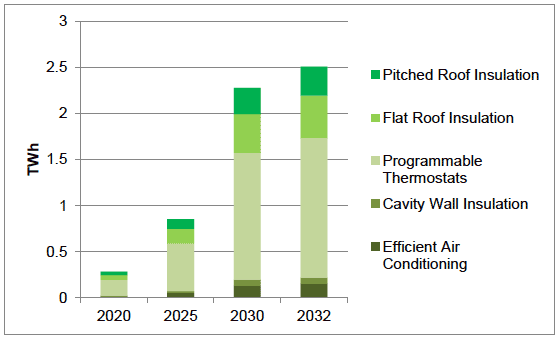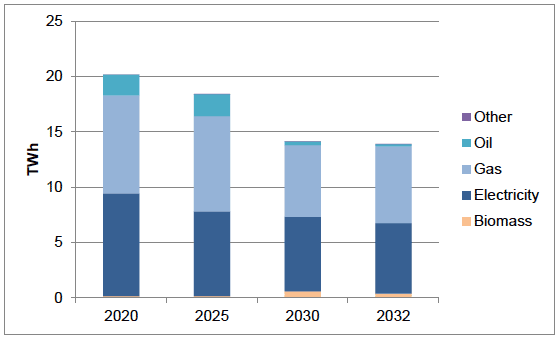Climate Change Plan: third report on proposals and policies 2018-2032 – technical annex
This annex provides an overview of the analysis underpinning the Climate Change Plan
Service Sector
Sector Overview:
The Service sector is broadly defined in the same way as the Residential sector. The primary energy service demands are space heating/cooling, water heating, lighting, computers, cooking, refrigeration and other electricity. The sector is divided into public and private buildings and, within each of those sectors, the building stock is divided into high- and low-energy consumption buildings. The technology options available to the model are very similar to those available in UK TIMES, with the base year stock adapted to reflect the current capacity in Scotland. Data is currently not available on the split of public to private buildings or the current total energy demand in the Scottish Service sector, though there is data development work underway in this area. The public/private buildings split is estimated based on the public/private sector building greenhouse gas emissions in Scotland from the Greenhouse Gas Inventory. Total energy demands are estimated as set out below.
Data Inputs:
Demand for space heat/cooling, hot water and lighting are driven by floorspace projections, based on the UK TIMES model. For computing, cooking, refrigeration and other appliances, demand is based on Scottish Government Gross Domestic Product ( GDP) forecasts and the elasticity of energy to GDP from the UK TIMES model.
Technical potential and costs of all technologies for the Services sector are based on UK TIMES. Potential savings from smart meters were taken from the UK Government's Smart Meter Roll-Out ( GB): Cost-Benefit Analysis [9] .
Additional constraints since the Draft Plan:
New constraints added to the Services sector since publication of the draft Climate Change Plan include the following:
- The share of Scottish non-domestic building energy demand as a share of UK demand has been updated to the most recent data available on the Scottish share of UK non-domestic energy consumption, using data from BEIS
- A minimum share (2%) of future non-electrical heat is now supplied by biomass boilers, reflecting current activity
- Potential energy savings from smart meters are now incorporated in the model, as detailed above
- The phased potential introduction of conservation measures is now in line with expected potential energy savings under the SEEP programme
Results:
Energy efficiency saves the equivalent of around 2% of demand for space heating and cooling, and hot water in 2020, rising to around 20% in 2032. Savings from smart meters are additional to this and are assumed to be around 4% of total demand for space heating/cooling and hot water.
The breakdown of total space heating and cooling, and hot water saved by conservation measure is given in the chart below.
Figure 13: Total Energy Saving by Conservation Measure ( TWh), TIMES model results

Total fuel use by the Service sector falls from approximately 20 TWh in 2020 to 14 TWh in 2032. Almost equal shares of gas and electricity are used over the lifetime of the Plan. Gas usage is estimated to reduce from approximately 9 TWh to around 7 TWh in 2032. Electricity use falls from about 9 TWh in 2020 to about 6 TWh in 2032.
Figure 14: Fuel Use Breakdown ( TWh), TIMES model results

Contact
There is a problem
Thanks for your feedback